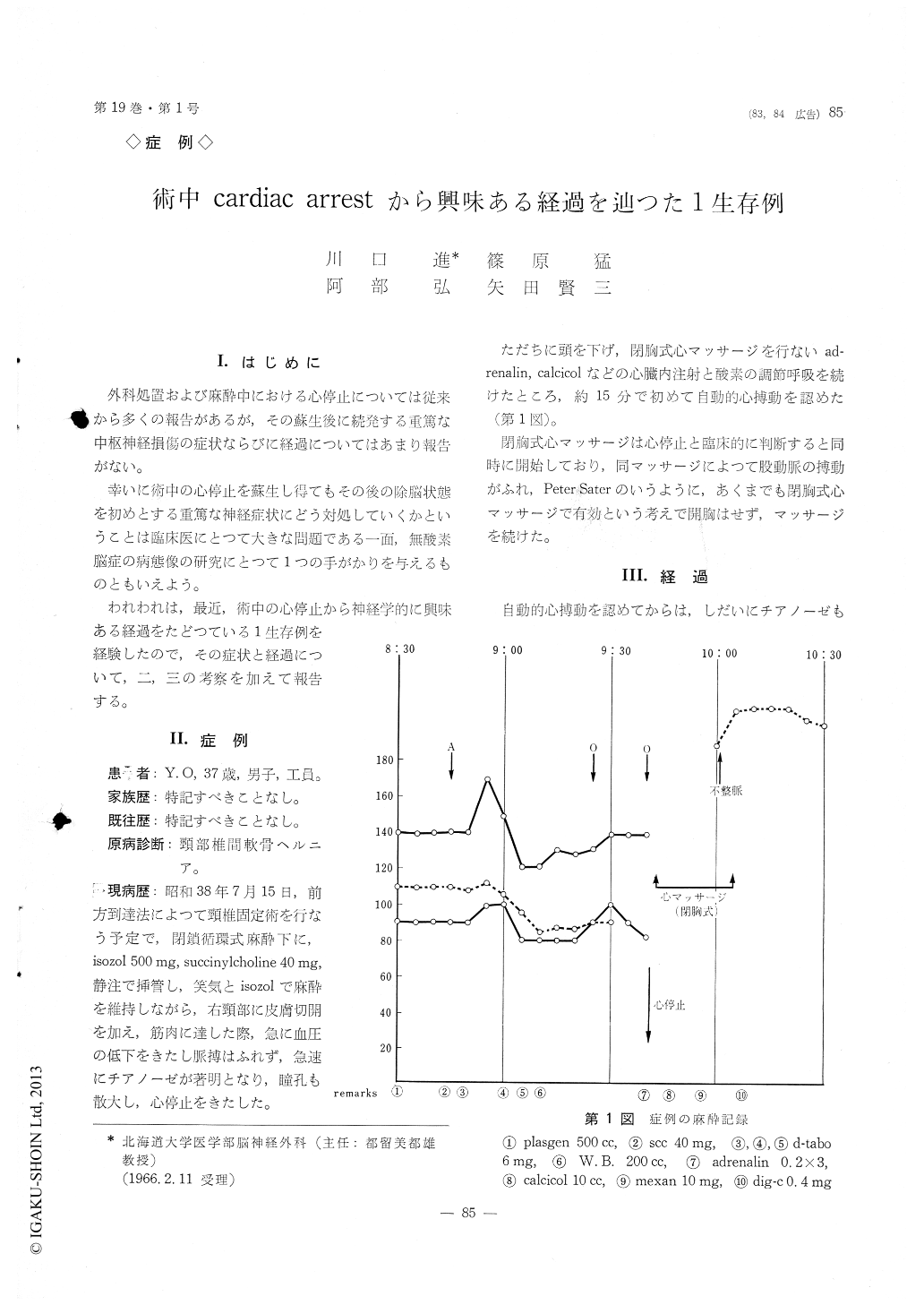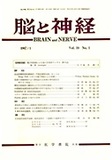Japanese
English
- 有料閲覧
- Abstract 文献概要
- 1ページ目 Look Inside
I.はじめに
外科処置および麻酔中における心停止については従来から多くの報告があるが,その蘇生後に続発する重篤な中枢神経損傷の症状ならびに経過についてはあまり報告がない。
幸いに術中の心停止を蘇生し得てもその後の除脳状態を初めとする重篤な神経症状にどう対処していくかということは臨床医にとつて大きな問題である一面,無酸素脳症の病態像の研究にとつて1つの手がかりを与えるものともいえよう。
The case reported here is a 37 year old male who developed anaesthetic cardiac arrest for approximately 15 minutes at the beginning of an operation for the cervical disc lesion. Closed cardiac massage was done immediately and was continued until a spontaneous effective heart beat was restored. The patient re-mained in deep coma even after the restoration of the heart beat and normal systolic blood pressure. Be-cause of the poor condition of the consciousness, tracheostomy was necessary in order to maintain a proper air-way.
Approximately 8 hours after the accident, the patient started to show grand mal type seizures which were fairly easily controlled with routine anticonvulsant agents. The posture of the patient at this stage was that of typical decerebrate rigidity, and his both eyes were deviated and fixed to lateral superior direction, which did not move even on passive head rotation.

Copyright © 1967, Igaku-Shoin Ltd. All rights reserved.


